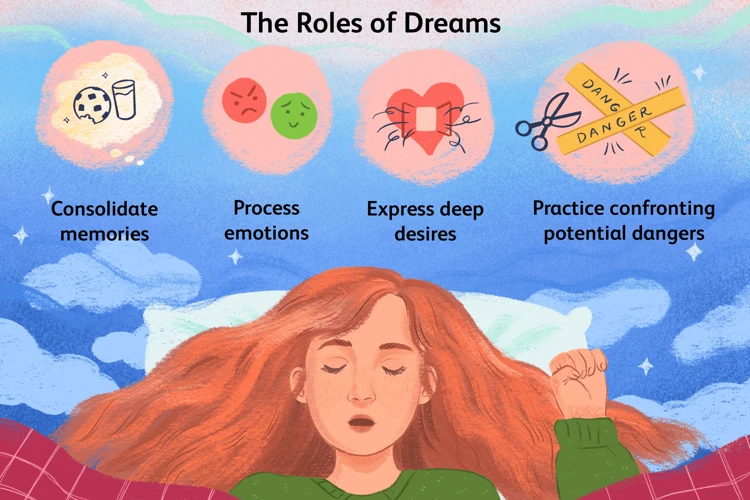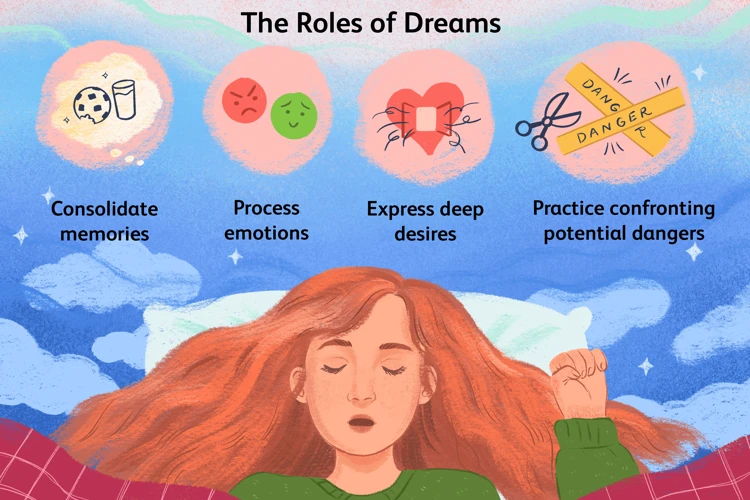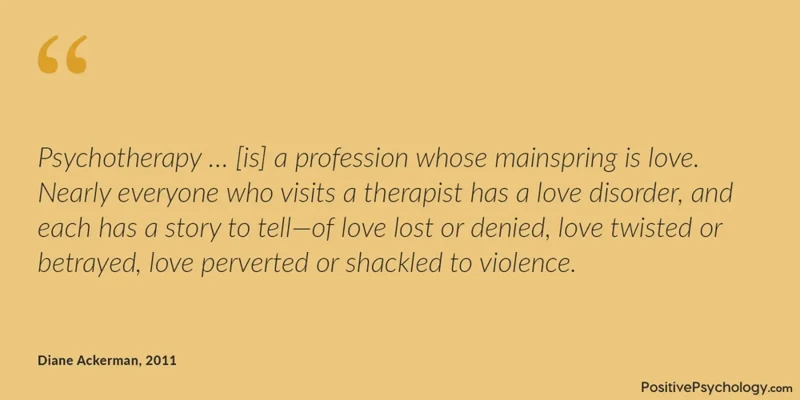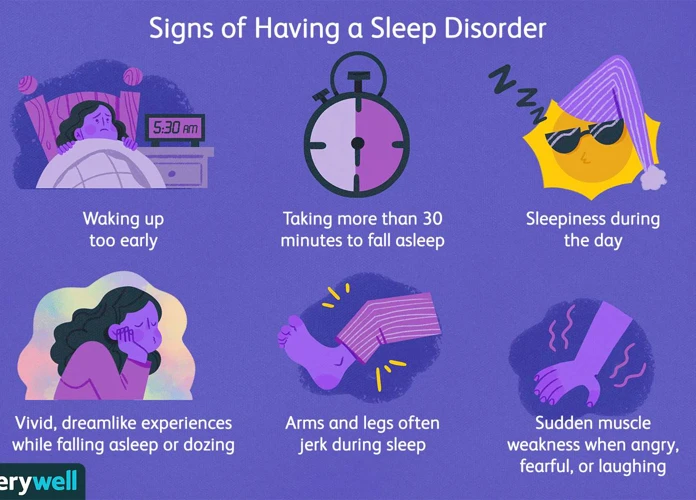Nightmares can be terrifying experiences that leave us feeling disturbed and unsettled, often leaving us questioning their underlying causes. As we struggle with a lack of sleep and the fear of what awaits us during the night, it is important to explore the potential link between nightmares and sleep disorders. This article aims to delve into the science behind nightmares, the common sleep disorders that plague many individuals, and the possible relationship between the two. By understanding this connection, we can uncover treatment options and tips for better sleep, providing relief from the distressing grip of nightmares.
The Science Behind Nightmares

The science behind nightmares is a fascinating field that seeks to unravel the mysteries of our subconscious mind. Nightmares are vivid and distressing dreams that often evoke strong emotions, such as fear, anxiety, or sadness. Research suggests that nightmares most commonly occur during the REM (Rapid Eye Movement) stage of sleep, which is characterized by increased brain activity and vivid dreaming. During this stage, our brains process and consolidate memories and emotions, leading to the manifestation of nightmares. Nightmares can be influenced by a variety of factors, including unresolved conflicts, traumatic experiences, or even medications. Understanding the science behind nightmares can offer valuable insights into our psychological well-being and pave the way for potential treatments and coping mechanisms. Unresolved conflicts in relationships or unresolved emotional experiences are often linked to recurring nightmares, highlighting the importance of addressing emotional and psychological issues that may contribute to the frequency of nightmares.
1.1 Understanding Nightmares
Understanding nightmares is essential in unraveling the complexities of our subconscious mind. Nightmares are intense and distressing dreams that can evoke strong emotions and leave a lasting impact upon waking. These dreams often involve vivid, realistic scenarios that may involve danger, fear, or anxiety-provoking situations. While nightmares are commonly associated with negative emotions, it is important to note that not all bad dreams can be categorized as nightmares. Nightmares often disrupt the sleep cycle, causing awakening during the night and resulting in feelings of unease and restlessness. The significance of nightmares lies in their potential to provide insights into our psychological well-being and underlying fears and anxieties. By analyzing the content of nightmares and exploring the emotions they elicit, mental health professionals can gain valuable information about an individual’s unresolved conflicts, traumas, or anxieties. These dreams can serve as powerful metaphors that symbolize internal struggles or unprocessed emotions. Understanding nightmares can lead to personal growth, as individuals might seek therapy, such as cognitive behavioral therapy or explore techniques like lucid dreaming to gain control over their dreams and alleviate nightmare frequency.
1.2 Types of Nightmares
When it comes to nightmares, they can take on various forms and themes, each with its own unique characteristics. Understanding the different types of nightmares can shed light on the underlying emotions and experiences that may be influencing our dreams. One common type of nightmare is the anxiety dream, which often revolves around feelings of stress, fear, or apprehension. These dreams may involve being trapped, chased, or facing a threatening situation. Another type is the nightmare of failure, where individuals experience dreams of making mistakes, being unprepared for an important event, or experiencing a significant loss. Nightmares can also be categorized as recurrent nightmares, which are dreams that repeat with similar themes. These dreams can be especially distressing and may signal unresolved emotional issues or trauma. Additionally, some individuals may experience nightmares related to specific phobias, such as heights, spiders, or public speaking. Exploring the different types of nightmares helps us recognize the wide range of emotions and experiences that can manifest in our dreams, providing valuable insights into our subconscious mind. If you’d like to learn techniques to manage nightmares and promote lucid dreaming, you can read about it here.
1.3 Causes of Nightmares
There are various factors that can contribute to the occurrence of nightmares. Understanding the causes behind these unsettling dreams is crucial in finding effective ways to manage and prevent them. Here are some common causes of nightmares:
1. Emotional Distress: Emotional distress, such as stress, anxiety, or depression, can significantly contribute to the occurrence of nightmares. These emotions often manifest themselves during sleep, leading to vivid and unsettling dreams.
2. Traumatic Experiences: Individuals who have experienced trauma, such as abuse, accidents, or natural disasters, may be more prone to nightmares. Trauma can leave a lasting impact on the subconscious mind, resulting in recurring nightmares as a way of processing and coping with the event.
3. Medications and Substance Abuse: Certain medications, such as antidepressants, blood pressure medications, and sleep aids, have been linked to an increase in nightmares. Additionally, substance abuse, including drugs and alcohol, can disrupt sleep patterns and lead to nightmares.
4. Sleep Disorders: Nightmares can be associated with underlying sleep disorders, such as sleep apnea, insomnia, or restless leg syndrome. These disorders can disrupt the sleep cycle, increase REM sleep, and contribute to the occurrence of nightmares.
5. Fever and Illness: During periods of illness or high fever, nightmares may be more prevalent. The physiological changes that occur in the body during illness can impact sleep quality and contribute to disturbing dreams.
6. Eating Habits: Consuming certain foods close to bedtime, such as spicy or heavy meals, can trigger nightmares in some individuals. Additionally, consuming caffeine or alcohol before sleep can disrupt the sleep cycle and increase the likelihood of nightmares.
It’s important to note that the causes of nightmares can vary from person to person, and understanding the specific triggers for each individual is essential in managing and reducing the occurrence of nightmares. By addressing these underlying causes, whether through therapy, medication adjustments, or lifestyle changes, individuals can take proactive steps to improve their sleep quality and overall well-being.
Common Sleep Disorders

Sleep disorders are common afflictions that can greatly impact our overall well-being and quality of life. They can disrupt our ability to fall asleep, stay asleep, or achieve restful sleep. Some of the most common sleep disorders include insomnia, sleep apnea, restless leg syndrome, and narcolepsy. Insomnia is characterized by persistent difficulties in falling asleep or staying asleep, leading to daytime fatigue and impaired functioning. Sleep apnea involves interrupted breathing during sleep, causing frequent awakenings and poor sleep quality. Restless leg syndrome induces uncomfortable sensations in the legs, leading to an irresistible urge to move them, often interfering with sleep. Narcolepsy is a neurological disorder characterized by excessive daytime sleepiness and sudden episodes of sleep attacks. These sleep disorders can have profound effects on our physical and mental health, making it essential to seek proper diagnoses and treatment options for improved sleep and overall well-being.
2.1 Insomnia
Insomnia is a common sleep disorder that affects millions of people worldwide. It is characterized by persistent difficulty in falling asleep, staying asleep, or experiencing poor quality sleep. Individuals with insomnia often struggle with daytime fatigue, mood disturbances, and impaired cognitive function due to their sleep deprivation. There are two main types of insomnia: acute and chronic. Acute insomnia is usually short-term and is often triggered by factors such as stress, jet lag, or certain medications. Chronic insomnia, on the other hand, lasts for at least three nights a week for three months or more and is often caused by underlying medical conditions, mental health disorders, or poor sleep hygiene.
To effectively manage and treat insomnia, several approaches can be taken. Cognitive Behavioral Therapy for Insomnia (CBT-I) is a widely recommended technique that focuses on restructuring negative thoughts and behaviors related to sleep. It helps individuals develop healthy sleep habits and manage stressors that may contribute to their insomnia. Additionally, medications such as sedatives or sleep aids may be prescribed in certain cases, but their long-term use is typically discouraged due to potential dependency and adverse side effects. It is essential to address any underlying medical or mental health conditions that may be contributing to insomnia, as treating the root cause can significantly improve sleep quality. Incorporating relaxation techniques, maintaining a consistent sleep schedule, creating a conducive sleep environment, and avoiding stimulating activities before bedtime are also key strategies for managing insomnia. By implementing these measures, individuals with insomnia can work towards achieving better sleep and overall well-being.
2.2 Sleep Apnea
Sleep apnea is a common sleep disorder characterized by pauses in breathing or shallow breaths during sleep. This interruption in breathing can occur multiple times throughout the night, leading to poor quality sleep and a range of health issues. There are three main types of sleep apnea:
1. Obstructive Sleep Apnea (OSA): This is the most common form of sleep apnea, where the airway becomes partially or completely blocked during sleep. It often occurs when the muscles in the back of the throat fail to keep the airway open. OSA can be influenced by factors such as obesity, enlarged tonsils, or structural abnormalities in the airway.
2. Central Sleep Apnea (CSA): Unlike OSA, CSA occurs when the brain fails to transmit the proper signals to the muscles that control breathing. This results in a lack of effort to breathe during sleep. CSA is usually associated with underlying medical conditions, such as heart failure or neurological disorders.
3. Complex Sleep Apnea Syndrome (CompSA): Also known as mixed apnea, this type of sleep apnea is a combination of both obstructive and central sleep apnea. It is often seen in individuals who initially have OSA but develop central apnea due to the use of continuous positive airway pressure (CPAP) therapy.
Sleep apnea can have a significant impact on an individual’s sleep quality, leading to excessive daytime sleepiness, difficulty concentrating, and morning headaches. It is essential to diagnose and treat sleep apnea to improve overall sleep health and reduce the risk of associated health complications. Treatment options for sleep apnea include lifestyle changes, such as losing weight and avoiding alcohol before bedtime, as well as medical interventions like CPAP therapy, oral appliances, and surgery in severe cases. Seeking medical advice and undergoing sleep studies can help in determining the appropriate course of treatment for sleep apnea.
2.3 Restless Leg Syndrome
Restless Leg Syndrome (RLS) is a sleep disorder that can have a significant impact on an individual’s quality of sleep, leading to an increased risk of experiencing nightmares. RLS is characterized by an uncomfortable sensation in the legs, often described as a “creepy” or “itchy” feeling, that is accompanied by an overwhelming urge to move the legs. These symptoms typically worsen during periods of inactivity or at night, making it particularly disruptive to sleep. The exact cause of RLS is not fully understood, but it is believed to be related to abnormalities in the dopamine pathways of the brain. This disorder can lead to frequent awakenings during the night, as individuals with RLS feel compelled to move their legs to alleviate the discomfort. The sleep disturbances caused by RLS can disrupt the normal sleep cycle, potentially increasing the likelihood of experiencing nightmares. Additionally, the sleep deprivation resulting from RLS can further contribute to the occurrence of nightmares, as the brain struggles to process emotions and memories effectively. Managing RLS through medication or lifestyle changes, such as regular exercise and avoiding triggers like caffeine, can help improve sleep quality and potentially reduce the occurrence of nightmares.
2.4 Narcolepsy
Narcolepsy is a neurological sleep disorder characterized by excessive daytime sleepiness and sudden, uncontrollable episodes of falling asleep. People with narcolepsy often experience disrupted sleep patterns, including fragmented nighttime sleep and frequent awakenings. One of the key symptoms of narcolepsy is the occurrence of vivid and intense dreams during rapid eye movement (REM) sleep, which can sometimes lead to nightmares. These nightmares may be related to the disruption in the sleep cycle and the brain’s inability to regulate REM sleep properly. The intense emotions experienced during these dreams can cause distress and further disrupt sleep. Additionally, narcolepsy also affects the brain’s ability to control sleep-wake cycles, leading to sudden sleep attacks during the day. These daytime sleep attacks can disrupt normal daily activities and increase the risk of accidents. It is important for individuals with narcolepsy to seek medical evaluation and treatment, as management strategies such as medication and lifestyle changes can help to improve sleep quality and reduce the frequency of nightmares.
Possible Relationship between Nightmares and Sleep Disorders

The possible relationship between nightmares and sleep disorders is a complex area that warrants further exploration. While nightmares are often considered a common symptom of various sleep disorders, the connection between the two is not always straightforward. On one hand, nightmares can be a symptom of an underlying sleep disorder, such as insomnia, sleep apnea, restless leg syndrome, or narcolepsy. These sleep disorders disrupt the normal sleep patterns and can lead to the occurrence of nightmares. On the other hand, nightmares themselves can contribute to sleep disturbances and exacerbate existing sleep disorders. The recurring and distressing nature of nightmares can cause anxiety and fear around sleep, making it difficult for individuals to obtain restful sleep. It is crucial to address both the sleep disorder and the nightmares in order to improve sleep quality and overall well-being. Understanding the possible relationship between nightmares and sleep disorders can help guide treatment options and interventions for those who suffer from these disruptions in their sleep.
3.1 Nightmares as Symptoms of Underlying Sleep Disorders
Nightmares can sometimes be more than just bad dreams; they can serve as symptoms of underlying sleep disorders. Sleep disorders such as insomnia, sleep apnea, restless leg syndrome, and narcolepsy have been associated with an increased occurrence of nightmares. For instance, individuals with insomnia often experience difficulties falling asleep or staying asleep, leading to fragmented and disrupted sleep patterns. These disruptions can trigger more frequent and intense nightmares. Sleep apnea, characterized by pauses in breathing during sleep, can also contribute to the development of nightmares. The interruptions in breathing can cause arousals from sleep, leading to heightened dream activity and nightmares. Similarly, restless leg syndrome, which is characterized by an uncomfortable sensation in the legs that results in an uncontrollable urge to move them, can disturb sleep and lead to nightmares. Additionally, narcolepsy, a neurological disorder that affects the brain’s ability to regulate sleep-wake cycles, may be accompanied by vivid and intense dream experiences, including nightmares. Understanding the connection between nightmares and underlying sleep disorders is essential for accurate diagnosis and effective treatment. By addressing the underlying sleep disorder, healthcare professionals can help alleviate the frequency and severity of nightmares, improving overall sleep quality and well-being. Lucid dreaming techniques can also play a role in managing nightmares associated with sleep disorders by offering individuals a sense of control and agency within their dreams, reducing anxiety and fear.
3.2 Impact on Sleep Quality
The impact of nightmares on sleep quality is significant and can have detrimental effects on overall well-being. Nightmares often cause individuals to wake up abruptly, feeling frightened, sweaty, and with an increased heart rate. This disrupts the normal sleep cycle, preventing individuals from entering deeper, more restorative stages of sleep. As a result, individuals may experience reduced sleep efficiency, leading to excessive daytime sleepiness, fatigue, and impaired cognitive function. The constant fear of experiencing nightmares can also create anxiety and anticipation around sleep, further exacerbating sleep disturbances. Additionally, the emotional toll of nightmares can contribute to mood disorders such as depression and anxiety, which can further disrupt sleep patterns. The impact of nightmares on sleep quality extends beyond the nighttime experience, affecting daytime functioning and overall mental and physical health. It is crucial to address and manage nightmares in order to restore healthy sleep and improve overall well-being.
Treatment Options

When it comes to treating nightmares and accompanying sleep disorders, there are several options to explore. One effective approach is Cognitive Behavioral Therapy for Insomnia (CBT-I), which aims to identify and address the underlying causes of insomnia and associated nightmares. CBT-I helps individuals develop healthier sleep habits and coping strategies to manage anxiety and intrusive thoughts that may contribute to nightmares. Another treatment option for specific sleep disorders, such as sleep apnea, is Continuous Positive Airway Pressure (CPAP) therapy, which involves wearing a mask that delivers a constant stream of air to keep the airway open during sleep. Additionally, medications and other therapies may be employed to target specific sleep disorders and alleviate the frequency and intensity of nightmares. It is crucial to consult with healthcare professionals to find the most suitable treatment option based on the individual’s specific needs and underlying conditions. Lucid dreaming techniques can also be explored as a potential avenue for managing and reducing nightmares, although more research is needed in this area.
4.1 Cognitive Behavioral Therapy for Insomnia (CBT-I)
Cognitive Behavioral Therapy for Insomnia (CBT-I) is a widely recognized approach to treat insomnia, a common sleep disorder characterized by difficulty falling asleep, staying asleep, or experiencing non-restorative sleep. CBT-I focuses on identifying and changing negative thought patterns and behaviors that contribute to sleep disturbances. This therapy typically consists of several components. Firstly, sleep hygiene education is provided, which involves practicing good sleep habits such as maintaining a regular sleep schedule, creating a calming sleep environment, and avoiding stimulating activities before bedtime. Secondly, stimulus control therapy helps individuals associate their bed with sleep by encouraging them to only use the bed for sleep and intimacy. Additionally, relaxation techniques like progressive muscle relaxation or deep breathing exercises are often taught to reduce anxiety and promote a more relaxed state before bedtime. Another key component of CBT-I is sleep restriction therapy, where individuals limit their time in bed to match their actual sleep duration, which helps to consolidate sleep and reduce the time spent awake in bed. Lastly, cognitive therapy explores and challenges negative thoughts and beliefs about sleep, replacing them with more positive and realistic ones. CBT-I has shown promising results in improving sleep quality and reducing insomnia symptoms, offering a non-pharmacological option for those struggling with sleep disturbances.
4.2 Continuous Positive Airway Pressure (CPAP)
Continuous Positive Airway Pressure (CPAP) is a common treatment option for sleep-related breathing disorders, such as sleep apnea. CPAP therapy involves the use of a machine that delivers a constant flow of pressurized air through a mask worn over the nose or mouth during sleep. The purpose of CPAP is to keep the airway open by providing a continuous and steady stream of air, preventing interruptions in breathing and reducing snoring.
CPAP is highly effective in treating sleep apnea, a condition characterized by pauses in breathing or shallow breaths during sleep. By maintaining a consistent level of air pressure, CPAP helps to keep the airway unobstructed and ensures that the individual receives an adequate amount of oxygen throughout the night. This helps to alleviate symptoms such as daytime fatigue, morning headaches, and excessive daytime sleepiness.
Using CPAP can greatly improve sleep quality and reduce the occurrence of nightmares that may be associated with sleep disorders. By ensuring proper airflow and oxygenation, CPAP therapy promotes a more restful and uninterrupted sleep, allowing the individual to experience fewer disturbances during the night.
It is important to note that CPAP therapy requires proper fitting of the mask and adjustment of the air pressure to suit each individual’s needs. Working closely with a healthcare professional specialized in sleep disorders is essential to ensure the effectiveness and comfort of CPAP treatment. Adherence to CPAP therapy can significantly improve both sleep quality and overall well-being, leading to a reduction in nightmares and associated symptoms.
4.3 Medications and Other Therapies
4.3 Medications and Other Therapies can play a significant role in addressing nightmares and sleep disorders. There are various approaches that individuals can consider when seeking treatment options. Medications such as antidepressants, anti-anxiety drugs, and beta-blockers may be prescribed by healthcare professionals to help manage underlying conditions that contribute to nightmares, such as anxiety disorders or post-traumatic stress disorder (PTSD). These medications work by regulating brain chemicals and reducing the intensity of nightmares. It is important to note that medication should always be taken under the guidance and supervision of a healthcare professional.
In addition to medication, other therapies and techniques can also be beneficial in managing nightmares. One such therapy is called Imagery Rehearsal Therapy (IRT). This technique involves rewriting the content of nightmares to have a more positive outcome and rehearsing the revised dream scenario before sleep. Gradually, this can help to reduce the frequency and intensity of nightmares.
Another therapy that can be explored is Eye Movement Desensitization and Reprocessing (EMDR). This therapy is typically used for individuals who have experienced traumatic events and suffer from associated nightmares. EMDR involves the use of eye movements or other forms of bilateral stimulation to assist individuals in processing and integrating distressing memories, ultimately reducing the occurrence of nightmares related to the traumatic experience.
Alternative therapies such as acupuncture, meditation, and hypnosis have also shown promise in managing nightmares and improving overall sleep quality. These therapies focus on relaxation techniques and promoting a sense of calm to ease the mind before sleep.
It is crucial to consult with a healthcare professional or sleep specialist to determine the most appropriate medication or therapy for an individual’s specific needs. Each person’s experience with nightmares and sleep disorders may be unique, and a tailored approach to treatment is often necessary. Through a combination of medications and other therapies, individuals can find relief and experience better quality sleep, free from the haunting grip of nightmares.
Tips for Better Sleep and Reduced Nightmares
1. Establish a Relaxing Bedtime Routine: Creating a calming routine before bed can signal to your body that it’s time to wind down and prepare for sleep. Consider activities such as reading a book, taking a warm bath, or practicing relaxation exercises like deep breathing or meditation.
2. Create a Comfortable Sleep Environment: Ensure that your bedroom is a conducive space for sleep. Keep the room dark, quiet, and at a comfortable temperature. Use comfortable bedding and invest in a supportive mattress and pillows to promote better sleep quality.
3. Stick to a Consistent Sleep Schedule: Going to bed and waking up at the same time every day, including weekends, helps regulate your body’s internal clock and promotes a more consistent sleep pattern. Avoid erratic sleep schedules, as they can disrupt your natural sleep-wake cycle.
4. Limit Stimulants and Electronic Devices: Avoid consuming caffeine, nicotine, and alcohol close to bedtime as they can interfere with your ability to fall asleep and may increase the likelihood of nightmares. Additionally, limit exposure to electronic devices such as smartphones, tablets, and TVs, as the blue light emitted by these devices can disrupt your sleep.
5. Manage Stress Levels: High levels of stress and anxiety can contribute to the occurrence of nightmares. Find healthy ways to manage stress, such as engaging in regular exercise, practicing relaxation techniques, or seeking support from a therapist or counselor.
6. Create a Sleep-Friendly Diet: Certain foods and beverages can impact sleep quality. Avoid heavy or spicy meals close to bedtime and opt for lighter options instead. Additionally, consider incorporating sleep-promoting foods into your diet, such as cherries, kiwis, almonds, and herbal teas like chamomile.
7. Keep a Dream Journal: Keeping a dream journal can help you gain insights into your dreams and potentially identify patterns or triggers for nightmares. By recording your dreams upon waking, you may uncover recurring themes or emotions that can be further explored.
8. Seek Professional Help: If nightmares persist and significantly impact your quality of life, it is advisable to seek help from a sleep specialist or mental health professional. They can evaluate your symptoms, provide an accurate diagnosis, and offer tailored treatment options.
By implementing these tips, you can improve both the quality of your sleep and reduce the frequency and intensity of nightmares, leading to a more restful and rejuvenating night’s rest.
Conclusion
In conclusion, the potential link between nightmares and sleep disorders cannot be ignored. Nightmares serve as possible symptoms of underlying sleep disorders, and they can significantly impact sleep quality and overall well-being. Understanding the science behind nightmares and recognizing the common sleep disorders that often coexist with these unsettling dreams is crucial for effective treatment. Cognitive Behavioral Therapy for Insomnia (CBT-I) has shown promising results in managing sleep disorders and reducing nightmares. Additionally, treatments such as Continuous Positive Airway Pressure (CPAP) and various medications offer relief for specific sleep disorders like sleep apnea and restless leg syndrome. However, it’s important to consult with a healthcare professional to determine the most suitable treatment approach for individual needs. Incorporating healthy sleep habits, maintaining a relaxing sleep environment, and managing stress can also contribute to better sleep quality and reduce the occurrence of nightmares. By addressing both the sleep disorder and the nightmares themselves, individuals can experience improved sleep and a renewed sense of well-being.
Frequently Asked Questions
1. Can nightmares be a sign of a sleep disorder?
Yes, nightmares can potentially be a sign of an underlying sleep disorder. Nightmares can occur in various sleep disorders such as insomnia, sleep apnea, and narcolepsy.
2. Are nightmares more common in children or adults?
Nightmares are more common in children, especially during early childhood. However, they can occur in adults as well, particularly in individuals who have experienced trauma or are dealing with high levels of stress.
3. Can medications cause nightmares?
Yes, certain medications can potentially lead to an increase in nightmares as a side effect. Medications such as antidepressants, blood pressure medications, and some antipsychotics may affect sleep patterns and contribute to the occurrence of nightmares.
4. How can unresolved conflicts impact nightmares?
Unresolved conflicts, whether in relationships or within oneself, can create emotional distress that manifests in nightmares. These unresolved conflicts can often influence the content and frequency of recurring nightmares.
5. Can lucid dreaming techniques help prevent nightmares?
Lucid dreaming techniques can sometimes be helpful in managing nightmares. By becoming aware that you are dreaming within a nightmare, you may be able to alter the dream’s course or wake yourself up, potentially reducing the distress experienced during the nightmare.
6. What role does sleep quality play in the occurrence of nightmares?
Poor sleep quality, such as fragmented sleep or inadequate amounts of deep sleep, can contribute to the occurrence of nightmares. Improving sleep hygiene and addressing any underlying sleep disorders can help reduce the frequency of nightmares.
7. Can treating a sleep disorder help alleviate nightmares?
Yes, treating an underlying sleep disorder can often help alleviate nightmares. By improving sleep quality and addressing the root causes of the sleep disorder, the frequency and intensity of nightmares can be reduced.
8. Is it necessary to seek professional help for recurrent nightmares?
It is advisable to seek professional help for recurrent nightmares if they significantly disrupt sleep, cause distress, or interfere with daily functioning. A healthcare professional can provide guidance and explore potential underlying causes.
9. How does stress impact the occurrence of nightmares?
Stress can increase the frequency of nightmares, as it can disrupt normal sleep patterns and amplify emotional responses during sleep. Finding healthy ways to manage stress, such as relaxation techniques or seeking support, may help reduce nightmares.
10. Are there any medications specifically designed to treat nightmares?
While there are no medications specifically designed to treat nightmares, certain medications used for other purposes, such as antidepressants or anti-anxiety medications, may be prescribed by a healthcare professional to help manage nightmares in some cases.








